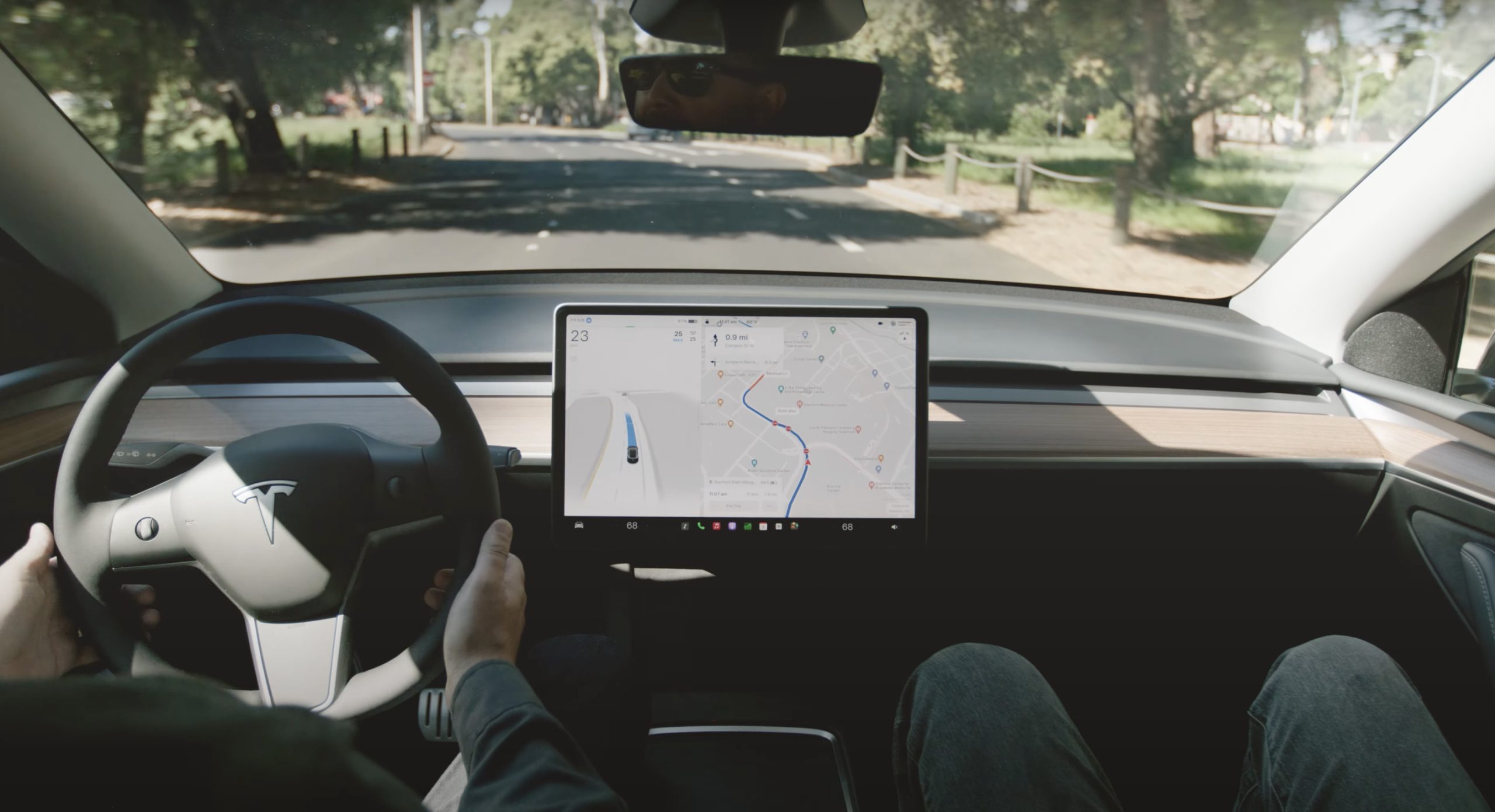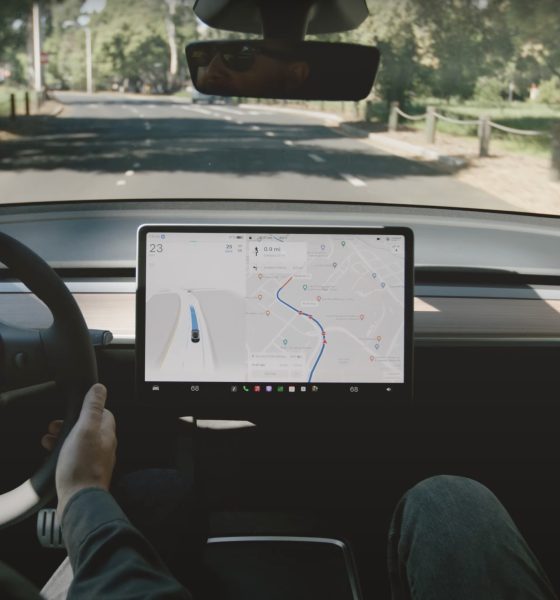

News
Tesla owners share first impressions of FSD V12.5 on Hardware 3 vehicles
It appears that Tesla is now ramping the release of FSD V12.5.1.5 to more Hardware 3 vehicles. Based on comments from HW3 Tesla owners on social media, it appears that the recently released update represents a good step forward for the advanced driver-assist system.
As noted by Tesla Director of Autopilot Software Ashok Elluswamy in a recent comment on social media platform X, the company was able to achieve similar performance as HW4’s FSD V12.5 release with a smaller model for Hardware 3 vehicles. He also noted that deploying the larger model required Tesla to “implement a few kernels in the compiler to emulate the same operations that are natively supported on the AI4 hardware.”
First Drive of 12.5.1.5 on HW3! Fixed the One Main Issue on this route! pic.twitter.com/6RDBIwwD2l— Rocco Speranza (@R0cco_Speranza) August 23, 2024
While initial reports of FSD V12.5’s HW3 release still suggested that the software was being rolled out to employees, later posts on social media suggested that regular consumers were also receiving the update. Reviews posted on social media from longtime Tesla owners so far suggest that FSD V12.5 may very well be the best version of the advanced driver assist system that has been rolled out to HW3 vehicles to date.
? FSD 12.5.1.5 Initial impression on HW3 (compared to 12.4.3)
• Feels smoother
• Seems to be able to anticipate other cars' movement much better
• Overall it feels "quicker" and more confident in making decisions
• Highway stack definitely feels more decisive
• Too low… https://t.co/TpUpGHNiQk pic.twitter.com/pgd9jTU2Mv— Effetto Tesla (@EffettoTesla) August 23, 2024
Among the most prominent comments from HW3 vehicle owners was that FSD V12.5 definitely feels smoother than previous iterations of the advanced driver assist system. The build reportedly also feels quicker and more confident in making decisions. This is quite evident in the freeway, as the highway stack has reportedly become more decisive with the V12.5 update as well. That being said, some owners also mentioned that V12.5’s auto speed is a bit too slow in Hardware 3 vehicles.
FSD 12.5.1.5 first impressions on HW3 “legacy” Model S (~45 min drive)
– the 12.5 magic is definitely still there. it takes natural paths through all the turns, has very good lane positioning, and much better acceleration / braking than any version so far
– it’s not hands free… pic.twitter.com/FYgEQcckOz— ΛI DRIVR (@AIDRIVR) August 23, 2024
Longtime FSD tester @AIDRIVR, who uses a Hardware 3 Tesla Model S with no interior camera, observed that the new update tends to take natural paths through turns. He also noted that FSD V12.5 has very good lane positioning. The update reportedly also featured the best acceleration and braking compared to any FSD version that has been released to date.
I just took FSD 12.5.1.5 (HW3) out for a quick after dark drive. It was flawless and extremely comfortable. However….!!! I think I could have said the same about many previous releases under the same situation. More testing required to form a full opinion. @BarryGoodStocks https://t.co/FKAAxvuNNw— FSD (Beta) Test Pilot (@j32pmxr) August 23, 2024
Overall, it does appear that FSD V12.5 is a solid release for Hardware 3 vehicles. However, it does present some concerns about how fast older Teslas would be receiving the latest updates from the electric vehicle maker. Tesla first started selling FSD as an add-on for Enhanced Autopilot in 2016, after all, and Hardware 3 was only made available for vehicles in 2019. Hardware 4 was released in 2023.
Watch a video of FSD V12.5 on a Hardware 3 vehicle below.
Don’t hesitate to contact us with news tips. Just send a message to simon@teslarati.com to give us a heads up.

News
Elon Musk’s Grokipedia surges to 5.6M articles, almost 79% of English Wikipedia
The explosive growth marks a major milestone for the AI-powered online encyclopedia, which was launched by Elon Musk’s xAI just months ago.

Elon Musk’s Grokipedia has grown to an impressive 5,615,201 articles as of today, closing in on 79% of the English Wikipedia’s current total of 7,119,376 articles.
The explosive growth marks a major milestone for the AI-powered online encyclopedia, which was launched by Elon Musk’s xAI just months ago. Needless to say, it would only be a matter of time before Grokipedia exceeds English Wikipedia in sheer volume.
Grokipedia’s rapid growth
xAI’s vision for Grokipedia emphasizes neutrality, while Grok’s reasoning capabilities allow for fast drafting and fact-checking. When Elon Musk announced the initiative in late September 2025, he noted that Grokipedia would be an improvement to Wikipedia because it would be designed to avoid bias.
At the time, Musk noted that Grokipedia “is a necessary step towards the xAI goal of understanding the Universe.”
Grokipedia was launched in late October, and while xAI was careful to list it only as Version 0.1 at the time, the online encyclopedia immediately earned praise. Wikipedia co-founder Larry Sanger highlighted the project’s innovative approach, noting how it leverages AI to fill knowledge gaps and enable rapid updates. Netizens also observed how Grokipedia tends to present articles in a more objective manner compared to Wikipedia, which is edited by humans.
Elon Musk’s ambitious plans
With 5,615,201 total articles, Grokipedia has now grown to almost 79% of English Wikipedia’s article base. This is incredibly quick, though Grokipedia remains text-only for now. xAI, for its part, has now updated the online encyclopedia’s iteration to v0.2.
Elon Musk has shared bold ideas for Grokipedia, including sending a record of the entire knowledge base to space as part of xAI’s mission to preserve and expand human understanding. At some point, Musk stated that Grokipedia will be renamed to Encyclopedia Galactica, and it will be sent to the cosmos.
“When Grokipedia is good enough (long way to go), we will change the name to Encyclopedia Galactica. It will be an open source distillation of all knowledge, including audio, images and video. Join xAI to help build the sci-fi version of the Library of Alexandria!” Musk wrote, adding in a later post that “Copies will be etched in stone and sent to the Moon, Mars and beyond. This time, it will not be lost.”
News
Tesla Model 3 becomes Netherlands’ best-selling used EV in 2025
More than one in ten second-hand electric cars sold in the country last year was a Tesla Model 3.

The Tesla Model 3 became the most popular used electric car in the Netherlands in 2025, cementing its dominance well beyond the country’s new-car market.
After years at the top of Dutch EV sales charts, the Model 3 now leads the country’s second-hand EV market by a wide margin, as record used-car purchases pushed electric vehicles further into the mainstream.
Model 3 takes a commanding lead
The Netherlands recorded more than 2.1 million used car sales last year, the highest level on record. Of those, roughly 4.8%, or about 102,000 vehicles, were electric. Within that growing segment, the Tesla Model 3 stood far ahead of its competitors.
In 2025 alone, 11,338 used Model 3s changed hands, giving the car an 11.1% share of the country’s entire used EV market. That means more than one in ten second-hand electric cars sold in the country last year was a Tesla Model 3, Auto Week Netherlands reported. The scale of its lead is striking: the gap between the Model 3 and the second-place finisher, the Volkswagen ID3, is more than 6,700 vehicles.
Rivals trail as residual values shape rankings
The Volkswagen ID.3 ranked a distant second, with 4,595 used units sold and a 4.5% market share. Close behind was the Audi e-tron, which placed third with 4,236 registrations. As noted by Auto Week Netherlands, relatively low residual values likely boosted the e-tron’s appeal in the used market, despite its higher original price.
Other strong performers included the Kia Niro, the Tesla Model Y, and the Hyundai Kona, highlighting continued demand for compact and midsize electric vehicles with proven range and reliability. No other model, however, came close to matching the Model 3’s scale or market presence.
News
Tesla Model Y Standard Long Range RWD launches in Europe
The update was announced by Tesla Europe & Middle East in a post on its official social media account on X.

Tesla has expanded the Model Y lineup in Europe with the introduction of the Standard Long Range RWD variant, which offers an impressive 657 km of WLTP range.
The update was announced by Tesla Europe & Middle East in a post on its official social media account on X.
Model Y Standard Long Range RWD Details
Tesla Europe & Middle East highlighted some of the Model Y Standard Long Range RWD’s most notable specs, from its 657 km of WLTP range to its 2,118 liters of cargo volume. More importantly, Tesla also noted that the newly released variant only consumes 12.7 kWh per 100 km, making it the most efficient Model Y to date.
The Model Y Standard provides a lower entry point for consumers who wish to enter the Tesla ecosystem at the lowest possible price. While the Model 3 Standard is still more affordable, some consumers might prefer the Model Y Standard due to its larger size and crossover form factor. The fact that the Model Y Standard is equipped with Tesla’s AI4 computer also makes it ready for FSD’s eventual rollout to the region.
Top Gear’s Model Y Standard review
Top Gear‘s recent review of the Tesla Model Y Standard highlighted some of the vehicle’s most notable features, such as its impressive real-world range, stellar infotainment system, and spacious interior. As per the publication, the Model Y Standard still retains a lot of what makes Tesla’s vehicles well-rounded, even if it’s been equipped with a simplified interior.
Top Gear compared the Model Y Standard to its rivals in the same segment. “The introduction of the Standard trim brings the Model Y in line with the entry price of most of its closest competition. In fact, it’s actually cheaper than a Peugeot e-3008 and costs £5k less than an entry-level Audi Q4 e-tron. It also makes the Ford Mustang Mach-E look a little short with its higher entry price and worse range,” the publication wrote.








